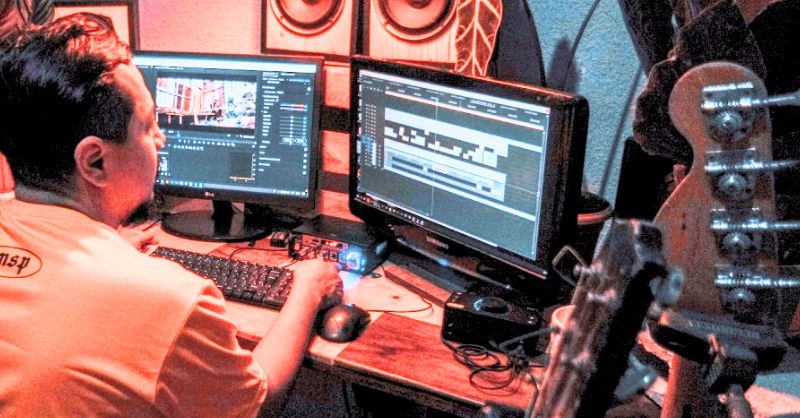One of the most effective tools to deliver educational content that doesn’t bore your viewers, but captivate their attention is a learning video. Simple, huh? Yet, to create educational videos that splendidly achieve their main purposes – inform and engage – is not a piece of cake. It requires a broad experience in the field, as well as a purely technical understanding of the production.
In this article, we’ll guide you on how to create a learning video and reach your project’s goals. Read on.
A Preparation Stage: What You Need to Do Before Actually Creating a Video
You don’t have to jump right into video creation: you need to prepare a project’s foundation first. Let’s take a look at how you can do that.
Set Your Goals
Understanding exactly what you want to achieve with your project helps you pick the right tools and techniques to meet your goals. You should decide what you want your video to achieve—teach something new, help people learn a skill, or let them practice what they already know. Only after doing so, move to the content structure.
Create a Course Structure
Educational videos can take up hours of content. To make your work easier, create a clear structure for the whole course. All the content needs to be categorized and systematized. After all, to provide an easy and pleasurable experience for the learners, a clear structure and well-organized material are crucial.
Team up with Topic Experts
In educational content, there might be a lot of intricate topics, statistics, or scientific information. Having a strong evidence base, like a well-developed database, is vital for a good course. To make it accurate and clear, make sure you find experts to collaborate with. Besides, adapting a professional language of a specific field is easier for those who can make it sound simple.
How to Make an Educational Video That Works?
Any video content is made to achieve certain goals. Educational videos are not an exception here. So, let’s review some fundamental tips to ensure your video achieves what you set up as a goal.
Choose a Fitting Type of Video
A typical mistake is to make a visually appealing video but to mess up with the form. High-quality videos are a must, that’s for sure. But cool animation alone won’t work; it needs a proper form.
For example, when illustrating some simple concepts, going with a whiteboard animation would be more than enough. If you have more complex subjects to present, it will demand a higher level of detail or accuracy, which whiteboard animation simply cannot offer. So, choose the right form first, then decide what visuals should be.
Don’t Skip a Briefing
When you engage in a big project that may take weeks to finish, it is only natural to skip the so-called “secondary” stages. For many people, briefing seems to be one of these. However, it is crucial. Why? Well, this is a part where the client and a production team work together to identify the key messages of the project. All the sides involved in the project have to realize what will constitute a future video. You establish a course for:
♦ Script;
♦ Scenario;
♦ Animation style;
♦ Type of video.
Client’s Participation
The best videos are those that appear from a smooth collaboration between both parties. Clients should always be in touch with a production team to provide timely feedback and suggest changes when it is necessary.
Creating Educational Videos: 3 Key Stages
Delivering an educational video might take a different number of steps – it depends on the production company’s frameworks. But all of them fall under three main stages: pre-production, production, and post-production. What should you do on each of them? Let’s explore it.
Pre-Production Stage
As you understand, we already covered a few things that are inherent to the pre-production part. Besides that, you have to establish ways to assess progress, decide how to deliver content, and plan out how the instruction will work. While the actual production is still ahead, it is time to refine information from experts, write scripts, and add technical specifications for all media content to be created.
Production Stage
At this point, the team chooses the style and delivers the first samples. Also, it involves creating all the visual elements that will appear in the finished video. It will include:
♦ brand identity;
♦ storyboards;
♦ illustrations;
♦ animations;
♦ voiceover.
Post-Production Stage
It is time to add final edits, conduct final Q&A sessions, and make sure a video fits all the requirements negotiated earlier. It is the stage of revisions; the polishing has been done earlier.
Creating Educational Videos that Truly Engage: a Quick Guide
To make your video a stand out, follow the next tips:
♦ Emphasize key message – make visual cues to highlight your core message. It can be captions, visual pointers (like arrows or boxes), or even dramatic pauses in the video.
♦ Make information more digestible – in other words, don’t make it long. People perceive smaller chunks of information more easily, so divide it into pieces. It will also help you make the course smoother – designers can use such a format to add quizzes, tests, and interactive exercises.
♦ Pick the right tone of voice – in a world where a personal connection is so vital, you have to speak the language that audiences appreciate. One way to do that is by talking in a friendly way and explaining things so people can understand easily. For instance, you can use examples that connect with what they’ve experienced before.
Making an Educational Video: What Impacts the Price?
It is quite hard to name the price for such a video just because there are lots of variables: the studio’s prices, specifics of the project, and additional circumstances. Yet, there are stable things that affect the price:
Type of video: simple animations like motion graphics cost around $250 per minute, while character animations can cost $500-750 per minute, and complex 3D animations can cost up to $10,000 per minute.
Complexity: the math here is very straightforward – if the subject is complex, it requires more effort, thus, the price will be higher.
Additional requests: A certain voice-over, illustrations in different styles, and translation will affect the price.
Conclusion
To ensure your educational content not only looks well but educates people, carefully choose e-learning content development services. With a professional team at your side, you can deliver top-notch courses that make people your loyal customers, and supporters. This is exactly what is worth creating high-quality products for.







 April 04, 2024
April 04, 2024






